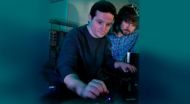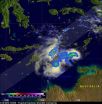(Press-News.org) A team of University of Toronto physicists led by Alex Hayat has proposed a novel and efficient way to leverage the strange quantum physics phenomenon known as entanglement. The approach would involve combining light-emitting diodes (LEDs) with a superconductor to generate entangled photons and could open up a rich spectrum of new physics as well as devices for quantum technologies, including quantum computers and quantum communication.
Entanglement occurs when particles become correlated in pairs to predictably interact with each other regardless of how far apart they are. Measure the properties of one member of the entangled pair and you instantly know the properties of the other. It is one of the most perplexing aspects of quantum mechanics, leading Einstein to call it "spooky action at a distance."
"A usual light source such as an LED emits photons randomly without any correlations," explains Hayat, who is also a Global Scholar at the Canadian Institute for Advanced Research. "We've proved that generating entanglement between photons emitted from an LED can be achieved by adding another peculiar physical effect of superconductivity - a resistance-free electrical current in certain materials at low temperatures."
This effect occurs when electrons are entangled in Cooper pairs – a phenomenon in which when one electron spins one way, the other will spin in the opposite direction. When a layer of such superconducting material is placed in close contact with a semiconductor LED structure, Cooper pairs are injected in to the LED, so that pairs of entangled electrons create entangled pairs of photons. The effect, however, turns out to work only in LEDs which use nanometre-thick active regions – quantum wells.
"Typically quantum properties show up on very small scales – an electron or an atom. Superconductivity allows quantum effects to show up on large scales – an electrical component or a whole circuit. This quantum behaviour can significantly enhance light emission in general, and entangled photon emission in particular," Hayat said.
INFORMATION:
Other U of T team members are physicists Hae-Young Kee, Kenneth S. Burch and Aephraim M. Steinberg. The research was published in Physical Review B, an international journal specializing in condensed-matter phenomena and materials physics on March 10.
Full article: http://journals.aps.org/prb/pdf/10.1103/PhysRevB.89.094508
MEDIA CONTACTS:
Alex Hayat
Now at: Technion, Israel Institute of Technology
alex.hayat@ee.technion.ac.il
+972-4-829-4682
Kim Luke
Communications, Faculty of Arts & Science
University of Toronto
416-978-4352
Kim.luke@utoronto.ca
Scientists open a new window into quantum physics with superconductivity in LEDs
Novel approach paves way for new quantum devices
2014-03-18
ELSE PRESS RELEASES FROM THIS DATE:
NASA sees some strength left in remnants of Tropical Cyclone Gillian
2014-03-18
NASA's TRMM satellite passed over the remnants of Tropical Cyclone Gillian and spotted some towering thunderstorms and areas of heavy rainfall, indicating there's still power in the former tropical storm.
Over the past few days former tropical cyclone Gillian's remnants moved from the Gulf of Carpentaria into the Timor Sea. The Tropical Rainfall Measuring Mission satellite known as TRMM found a few strong convective thunderstorms when it passed above these remnants on March 18, 2014 at 0431 UTC. TRMM's Precipitation Radar (PR) instrument measured rain falling at a rate ...
Incentives needed to improve grain markets in India
2014-03-18
URBANA, Ill. – Even after the agricultural reforms of 2002-03, for wheat, rice, and pearl millet farmers in India, grain markets are still pretty sticky. Two University of Illinois economists analyzed infrastructure of interstate trade for food-grain crops in three Indian states and found that grain farmers are unable to cash in on India's market reforms and take advantage of a price difference between two or more markets.
"We wanted to see if there was more integration in the markets since the 2002 reforms," said Kathy Baylis. "We were surprised at how little integration ...
MU study uses video-game device with goal of preventing patient falls
2014-03-18
Technology used in video games is making its way to hospital rooms, where researchers at the University of Missouri hope to learn new ways to prevent falls among hospital patients.
Between 700,000 and 1 million people each year fall in U.S. hospitals, according to the Agency for Healthcare Research and Quality. Hospitals nationwide are looking for ways to reduce that number.
"Since 2008, we've investigated ways to detect and prevent falls by older adults living in independent senior apartments," said Marilyn Rantz, PhD, RN, a leader of the MU research team and a professor ...
Reintroduction experiments give new hope for a plant on the brink of extinction
2014-03-18
A critically endangered plant known as marsh sandwort (Arenaria paludicola) is inching back from the brink of extinction thanks to the efforts of a UC Santa Cruz plant ecologist and her team of undergraduate students.
Ingrid Parker, the Langenheim professor of plant ecology and evolution at UC Santa Cruz, got involved in the marsh sandwort recovery effort at the request of the U.S. Fish and Wildlife Service (USFWS). Although it used to occur all along the west coast, from San Diego to Washington state, this wetland plant with delicate white flowers had dwindled to one ...
New therapeutic target discovered for Alzheimer's disease
2014-03-18
A team of scientists from the University of California, San Diego School of Medicine, the Medical University of South Carolina and San Diego-based American Life Science Pharmaceuticals, Inc., report that cathepsin B gene knockout or its reduction by an enzyme inhibitor blocks creation of key neurotoxic pGlu-Aβ peptides linked to Alzheimer's disease (AD). Moreover, the candidate inhibitor drug has been shown to be safe in humans.
The findings, based on AD mouse models and published online in the Journal of Alzheimer's Disease, support continued development of cysteine ...
Chronic sleep disturbance could trigger onset of Alzheimer's
2014-03-18
People who experience chronic sleep disturbance—either through their work, insomnia or other reasons—could face an earlier onset of dementia and Alzheimer's, according to a new pre-clinical study by researchers at Temple University.
"The big biological question that we tried to address in this study is whether sleep disturbance is a risk factor to develop Alzheimer's or is it something that manifests with the disease," said Domenico Praticò, professor of pharmacology and microbiology/immunology in Temple's School of Medicine, who led the study.
Initially, the researchers ...
Parents matter more than they think in how their children eat
2014-03-18
AURORA, Colo. (March 17, 2014) - Helping children learn to eat well can be a challenge. Some children happily eat whatever is put in front of them while others seem to eat like birds and exist more on air than food. A new study by a researcher at the University of Colorado School of Medicine shows that parents influence how much children eat more than they may think.
In this collaborative study between the CU School of Medicine, Baylor College of Medicine and University of Alabama Birmingham, researchers observed normal, everyday mealtimes in the homes of 145 parents ...
An end to animal testing for drug discovery?
2014-03-18
DALLAS, March 18, 2014 — As some countries and companies roll out new rules to limit animal testing in pharmaceutical products designed for people, scientists are stepping in with a new way to test therapeutic drug candidates and determine drug safety and drug interactions — without using animals. The development of "chemosynthetic livers," which could dramatically alter how drugs are made, was presented at the 247th National Meeting & Exposition of the American Chemical Society (ACS), the world's largest scientific society.
The meeting features more than 10,000 presentations ...
Form of epilepsy in sea lions similar to that in humans, Stanford researchers find
2014-03-18
STANFORD, Calif. — California sea lions exposed to a toxin in algae develop a form of epilepsy that is similar to one in humans, according to a new study led by Stanford University School of Medicine researchers.
Every year, hundreds of sea lions wash up along the California coast, suffering seizures caused by exposure to domoic acid, a neurotoxin that can produce memory loss, tremors, convulsions and death. Domoic acid is produced by algae blooms that have been proliferating along the coast in recent years, accumulating in anchovies and other small fish that the sea ...
New view of supernova death throes
2014-03-18
WASHINGTON D.C., March 18, 2014 -- A powerful, new three-dimensional model provides fresh insight into the turbulent death throes of supernovas, whose final explosions outshine entire galaxies and populate the universe with elements that make life on Earth possible.
The model is the first to represent the start of a supernova collapse in three dimensions, said its developer, W. David Arnett, Regents Professor of Astrophysics at the University of Arizona, who developed the model with Casey Meakin and Nathan Smith at Arizona and Maxime Viallet of the Max-Planck Institut ...
LAST 30 PRESS RELEASES:
New fossil study illuminates on the evolutionary success of frogs
Patient-specific human liver model to understand disease mechanisms
Confused by the doctor's questionnaire? U of A study suggests it's common
How do brains stay stable, and when might a dose of flexibility be helpful?
mRNA revitalizes aging immune systems—the liver as a fountain of youth
Rural-urban differences in the prevalence of chronic pain among adult cancer survivors
Food insecurity, burnout, and social isolation among resident and fellow physicians
How do spinal cord injuries heal?
Detailed cell map unlocks secrets of how reproductive organs form
Large language models unleash AI’s potential for autonomous and explainable materials discovery
Gut bacteria have evolved rapidly to digest starches in ultra-processed foods
New risk score helps predict pancreatic cancer recurrence
New evidence challenges understanding of Parkinson’s disease
A new study reveals how embryos and the uterus “talk” during implantation
Cedars-Sinai reports heart attacks, general illness spiked after LA fires
PolyU develops ultra-stable, mucus-inspired hydrogel to boost gastrointestinal wound healing
Flour choice shapes sourdough microbial communities
Can a retinal implant reverse macular degeneration?
Feeding fungi plant remnants produces tasty protein to fortify vegan, vegetarian diets
New tech reduces false positives from breast ultrasounds
Drone-mounted lab monitors fertilizer runoff in real time
Short, light-intensity exercise boosts executive function and elevates mood in children
Jeonbuk National University researchers reveal new interface engineering strategy for efficient and stable back-contact solar cells
Tyrosinase drives hydroquinone-induced exogenous ochronosis: not HGD inhibition
UMass Amherst chemists develop unique tool for studying RNA
Disappointment alters brain chemistry and behavior
A built-in odometer: new study reveals how the brain measures distance
Stress-related brain signals drive risk of cardiovascular disease in people with depression and anxiety
New details on role of fat transport molecules in Alzheimer’s onset
Study illuminates how an antiviral defense mechanism may lead to Alzheimer’s disease
[Press-News.org] Scientists open a new window into quantum physics with superconductivity in LEDsNovel approach paves way for new quantum devices



